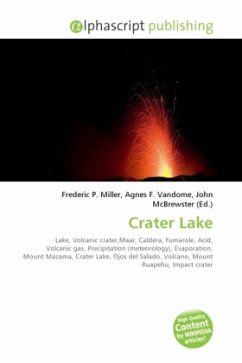A Crater lake is a lake that forms in a volcanic crater, such as a maar, or in a caldera. Sometimes the latter are called Caldera lakes, but often this distinction is not made. Crater lakes covering active (fumarolic) volcanic vents are sometimes known as Volcanic lakes, and the water within them is often acidic, saturated with volcanic gases, and cloudy with a strong greenish color. Lakes located in dormant or extinct volcanoes tend to have fresh water, and the water clarity in such lakes can be exceptional due to the lack of inflowing streams and sediment. Crater lakes form as incoming precipitation fills the depression. The lake deepens until an equilibrium is reached between the rate of water coming in and the rate of water loss due to evaporation, subsurface drainage, and possibly also surface outflow if the lake fills the crater up to the lowest point on its rim. Surface outflow can erode the deposits damming the lake, lowering its level. If the dam erodes rapidly, this canproduce a breakout flood. A well-known crater lake, which bears the same name as the geological feature, is Crater Lake in Oregon, USA.
Bitte wählen Sie Ihr Anliegen aus.
Rechnungen
Retourenschein anfordern
Bestellstatus
Storno








